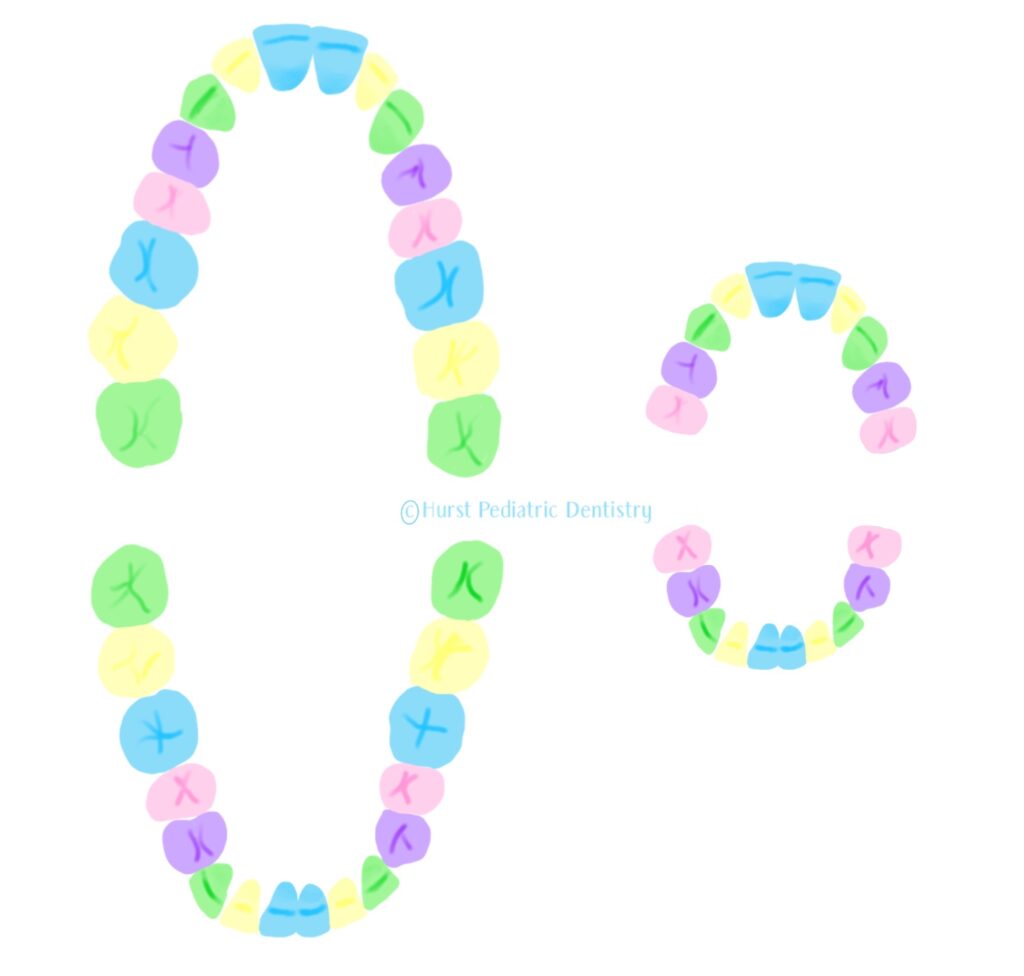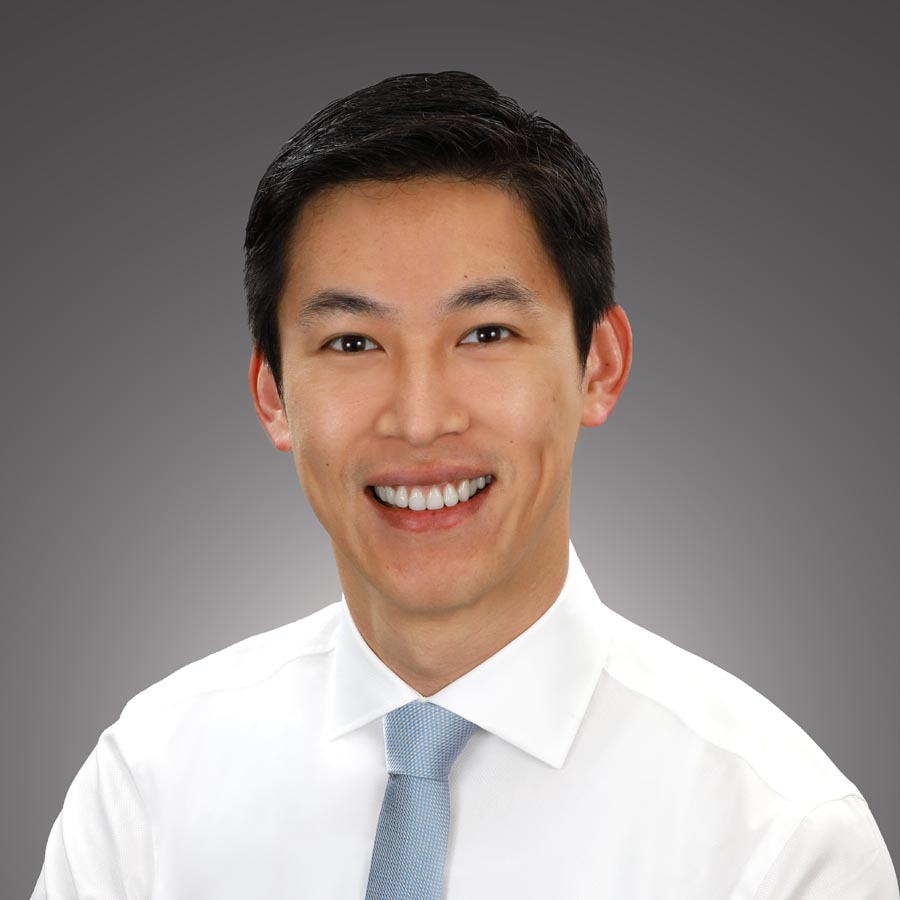What Is A Supernumerary Tooth?

Does your kid have an extra tooth growing? In this article, we will cover the following topics:
- What Is A Supernumerary Tooth?
- What Do Supernumerary Teeth Look Like?
- How Common Are Supernumerary Teeth in Kids?
- What Causes Supernumerary Teeth in Children?
- Does Hyperdontia Cause Problems in Children?
- Do Supernumerary Teeth Need to Be Removed?
What Is A Supernumerary Tooth?
A supernumerary tooth is an extra tooth.
Typically, humans have sets of 20 baby teeth and 32 permanent teeth (assuming all four wisdom teeth develop), as shown in the diagrams below. If a person has one or more teeth that are additional to these typical sets of teeth, the person is said to have hyperdontia, and the additional teeth are known as supernumerary teeth.
Note that it is possible for a person to have a supernumerary tooth without having more than 20 baby teeth or 32 permanent teeth. This is so because a person can simultaneously have both hyperdontia (extra teeth) and hypodontia (missing teeth).
For example, some people never grow wisdom teeth (a form of hypodontia), but these people can still have supernumerary teeth. A person who never grew wisdom teeth but who had an extra tooth growing in between her two front teeth would have only 29 permanent teeth. But the additional tooth between her two front teeth clearly would not replace one of the missing wisdom teeth. Rather, it would be an additional tooth outside the normal set of permanent teeth and therefore would be supernumerary.

What Do Supernumerary Teeth Look Like?
Some supernumerary teeth resemble normal teeth – these are called “supplemental” supernumerary teeth. Most, however, are “rudimentary,” meaning that they are abnormal in shape and/or size. For example, it is common for supernumerary teeth to be smaller than normal or to have a conical shape, where the top of the tooth is narrower than the base.
Supernumerary teeth often appear near a child’s other teeth, although it is possible for them to appear in other locations, such as the roof of a child’s mouth. In rare cases, supernumerary teeth have even been found in the nasal cavity. The most common type of supernumerary tooth is the mesiodens, which is a supernumerary tooth that forms between the upper two front teeth.
Note that supernumerary teeth do not always erupt through the gums. In such cases, the supernumerary teeth may be visible only via dental X-rays.
How Common Are Supernumerary Teeth in Kids?
Studies have estimated that anywhere between 0.1% and 3.8% of people have supernumerary teeth.
The incidence rate is significantly higher among children with cleft lip and palate and those with certain syndromes. For example, studies have found that 28% of patients with cleft lip or palate, 21% of patients with Gardner’s syndrome, and more than 35% of patients with cleidocranial dysplasia had supernumerary teeth.
Children who have hyperdontia typically have only one supernumerary tooth, and it is rare to have more than two. In one Australian study, 68.6% of people with hyperdontia were found to have a single supernumerary tooth, while only 11.1% had three or more. The presence of large numbers of supernumerary teeth is often associated with certain syndromes. For example, children with cleidocranial dysplasia sometimes develop up to 30 supernumerary teeth.
Supernumerary permanent teeth are much more commonly reported than supernumerary primary (“baby”) teeth. However, some researchers have speculated that this may simply be a result of a lower detection rate in baby teeth.
What Causes Supernumerary Teeth in Children?
Although various theories have been proposed, no one knows for sure what causes hyperdontia. Some researchers believe that supernumerary teeth might result from a combination of environmental and genetic factors, but neither the nature of the relevant environmental factors nor the role that genes might play in the condition are well understood.
Does Hyperdontia Cause Problems in Children?
In some cases, the presence of supernumerary teeth creates no adverse effects. In most cases, however, hyperdontia results in one or more clinical complications. Some of the more common complications include the following:
- Crowding and/or Displacement. Supernumerary teeth can lead to crowded teeth and can cause adjacent teeth to rotate or otherwise move out of proper alignment. Crowded and crooked teeth can be harder to clean properly (and thus may be more susceptible to cavities), can cause bite problems, and may create aesthetic concerns.
- Failure of Eruption. Supernumerary teeth can prevent adjacent teeth from erupting through the gums.
- Interference with Alveolar Bone Grafting. Supernumerary teeth can interfere with alveolar bone grafting, a surgery performed to repair cleft lip and palate.
- Dentigerous Cyst Formation. Sometimes cysts (i.e., fluid-filled sacs) form around unerupted supernumerary teeth. If not removed, these cysts can become infected and/or cause nearby teeth to shift out of alignment.
Do Supernumerary Teeth Need to Be Removed?
When supernumerary teeth cause clinical complications, extraction is typically recommended. The recommended timing of the extraction will depend on a variety of factors, including the location of the supernumerary tooth, whether the tooth is supplemental or rudimentary, and the potential effects of extraction on adjacent teeth and tissues.
If your child’s pediatric dentist recommends waiting until a later date to extract the supernumerary tooth, it is important to bring your child in for regular dental check-ups so that the dentist can carefully monitor both the supernumerary tooth and the development of your child’s other teeth to ensure that nothing changes that would alter the recommended extraction date.
Pediatric dentists are specially trained to understand the development of children’s teeth and jaws and the ways in which tooth extractions can affect that development. Bringing your child to a pediatric dentist for removal of a supernumerary tooth can help ensure the best outcome for your child’s dental health as a whole.
Supernumerary Tooth Removal in Dallas / Fort Worth
If you suspect your child may have a supernumerary tooth, bring your child to a board-certified pediatric dentist who has experience treating supernumerary teeth. Choosing a dentist who has been trained to understand the ways in which supernumerary teeth (and their extraction) affect children’s overall oral health, rather than a dentist who may view the supernumerary tooth in isolation, is important to help the rest of your child’s teeth and jaws develop properly.
Hurst Pediatric Dentistry’s Dr. Jin Lin is a board-certified pediatric dentist who is experienced at identifying and treating supernumerary teeth. Call today at (817) 510-6400 to make an appointment for your child.
Hurst Pediatric Dentistry is located in Hurst, Texas and serves pediatric patients from Hurst, Bedford, Euless, Colleyville, North Richland Hills, Fort Worth, Keller, Southlake and the surrounding area.
This article is intended to provide general information about oral health topics. It should not be used to diagnose or treat any medical condition or as a substitute for the advice of a healthcare professional who is fully aware of and familiar with the specifics of your case. Always seek the advice of your dentist or other qualified healthcare provider with regard to any questions you may have relating to a medical condition or treatment.
MEDICALLY REVIEWED BY:
Dr. Jin Lin

Dr. Jin Lin is a board-certified pediatric dentist with a passion for helping children achieve healthier, more beautiful smiles. He earned his Bachelor of Science degree from Cornell University and his Doctor of Dental Medicine (D.M.D.) degree from the Harvard School of Dental Medicine. After graduating cum laude from dental school, he completed his post-doctoral pediatric dentistry training at Boston Children’s Hospital and the Harvard School of Dental Medicine, where he served as chief resident and worked with children with a wide variety of special medical and dental needs, including children with rare syndromes.

